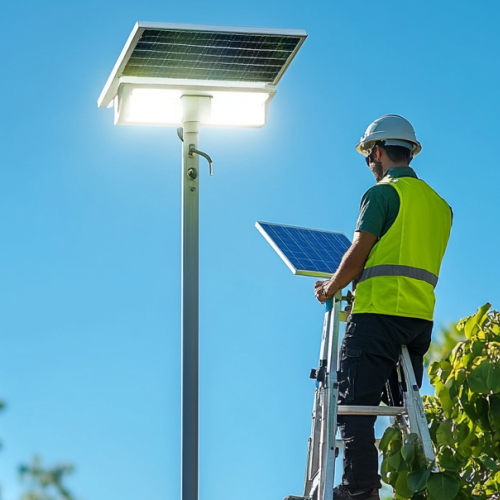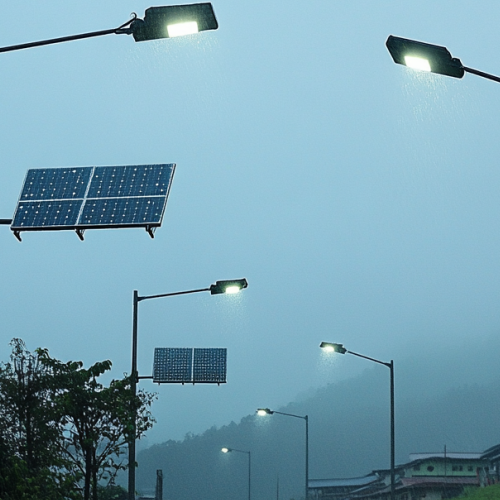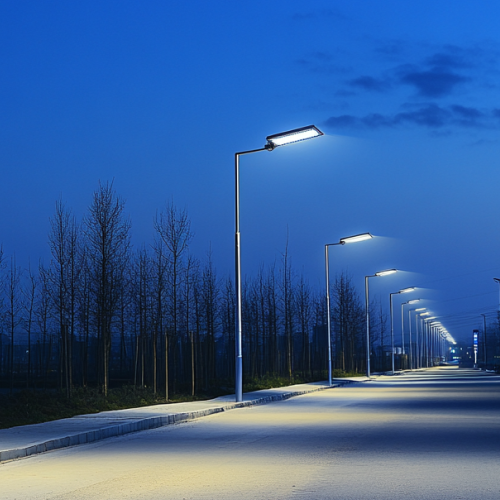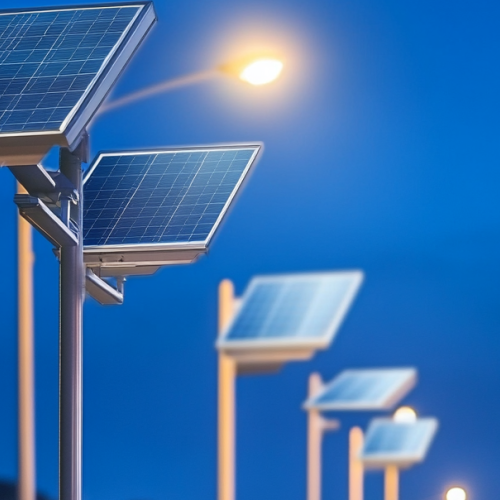Nowadays, solar power for street lights is widely used in the market, because they do have many incomparable advantages compared to ordinary grid-connected lights. What are advantages of solar powered street lights? Solar powered street lights use sunlight as energy, the solar panels charge the battery during the day, and the battery powers the light source at night. There's no need for complex and expensive pipeline laying, the layout of the lights can be adjusted as needed, and they are safe, energy-efficient, pollution-free, and require no manual operation, making them stable and reliable while saving electricity and maintenance costs. So what are the differences between solar powered street light and traditional grid-connected light? Below, we will introduce solar street lights VS conventional street lights to you.
The installation of traditional grid-connected lights requires cable laying. If there is a problem, the entire line needs to be checked, resulting in a high comprehensive maintenance cost. In contrast, solar energy street lights have a complete and closed circuit. If there is a problem, only one light needs to be repaired, making it simpler and more cost-effective.

Traditional grid-connected lights generally use high-voltage AC power as the power source, while street lights solar power use low-voltage DC power. In heavy rain and strong winds, high-voltage AC grid-connected lights are prone to cause safety accidents, and high-voltage has greater harm to people. So, relatively speaking, street lights powered by solar energy are safer.

The service life of traditional street lights is 1-3 years, and they often require maintenance. Solarpowered street lights use LED light sources, with a service life generally ranging from 5-10 years.

One of the most significant benefits of solar powered street lights is that solar powered street lights are an environmentally friendly light source that uses natural energy sources such as sunlight for power and illumination. Traditional grid-connected lights need electricity to light up all the lights, and the amount of electricity supplied to these lights is very large. Traditional power generation requires the burning of a large amount of coal resources, which results in emissions of waste gas and waste water that pollute the environment.

The above differences between solar powered LED street lights and traditional grid-connected lights are shared with you here. Generally speaking, solar powered street lights are better than traditional grid-connected lights, but in choosing to use them, decisions should also be made based on local climate conditions and policies.
| Solar Powered Street Lights | Traditional Grid-Connected Lights | |
| Maintenance Costs | If there is a problem, only one light needs to be repaired, making it simpler and more cost-effective | If there is a problem, the entire line needs to be checked, resulting in a high comprehensive maintenance cost |
| Safety Performance | Low-voltage DC (no electrocution risk), no exposed cables. Safe in floods/storms. | High-voltage AC risks (electric shocks, fire hazards during storms). Vulnerable to grid malfunctions. |
| Service Life | 5-10 years | 1-3 years |
| Environmental Impacts | Zero carbon emissions, renewable energy, minimal land disruption | Relies on fossil fuels, higher CO₂ emissions, land disruption for cabling, light pollution |

Make your business profitable
Zero your Electricity bill
Leading the solar solutions industry